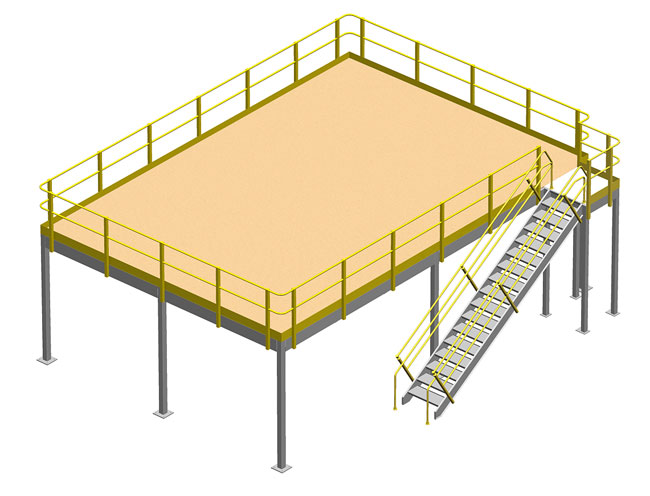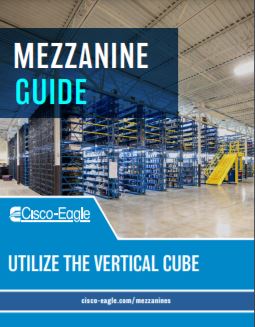When Is a Mezzanine Not a Mezzanine?
It's important to understand when a mezzanine is considered permanent construction or capital equipment

What a difference a name can make.
People tend to call any elevated platform a “mezzanine” in this industry, but that may be a mistake. When you are installing or otherwise specifying a platform, you need to be aware that the word “mezzanine” can cost you money and cause headaches when applied incorrectly.
The critical difference: is it part of the facility?
It boils down to whether or not authorities consider the mezzanine to be part of a building or capital equipment. This is because many new buildings are built with “mezzanine levels” that are essentially part of the building structure. When the structure is considered part of a building rather than capital equipment, it may have serious implications for code compliance, bathroom additions and handicap access and potentially for tax rates and depreciation. This all tends to boil down to intention — if the structure is typically used like most warehouse or industrial operation facilities, you aren’t dodging taxes or accessibility rules. You are applying them correctly. You just need the building permit people and regulators to clearly understand why the structure is being built, and what it’s for.
Consider calling your mezzanine project names such as work platforms, elevated platform, storage platform, equipment platform, etc. These are more accurate and descriptive than the overly inclusive–and sometimes inaccurate–word “mezzanine.”
When not to use the word “mezzanine”:
- When you want the function of the new installation made clear. If it is a platform where work is being executed, calling it a “work platform” during the bidding process, on installation drawings, on permit applications, etc., provides regulators an accurate definition of the platform’s function.
- When the building approval process is onerous. If the new structure doesn’t fit the technical definition of a mezzanine (as defined by law), don’t complicate the issue by calling it one.
- When federal depreciation dollars are important: Capital equipment depreciates over 7 years rather than 31.
- When you don’t want to overpay property taxes: In some areas, mezzanines are considered part of the square footage of the facility, and platforms aren’t. This can have a hefty impact on property taxes every year.
Be sure you adhere to local building codes and tax laws whenever you execute an elevated structure project; just calling these projects something different won’t change the need to adhere to these rules, but being clear as to the type of structure and function can save you headaches as you move forward.
More Resources
- How to Specify a Mezzanine
- Download Our Guide to Mezzanines and Platforms
- OSHA Guidelines on Mezzanine Railing
Download our Mezzanine Guide
The space you already have is more valuable than the space you could acquire. Adding a mezzanine to your facility can rapidly increase your vertical space available, and provide added efficiency and long-term value to your operations. Check out our guide for mezzanine specifications, styles, accessories and applications. You will find quick, useful information on mezzanines and how you can use them more effectively.
Download the guide today
Tags: warehousing, Building Permits, Mezzanines, taxes, Space Optimization
Scott Stone is Cisco-Eagle's Vice President of Marketing with 35 years of experience in material handling, warehousing and industrial operations. His work is published in multiple industry journals an websites on a variety of warehousing topics. He writes about automation, warehousing, safety, manufacturing and other areas of concern for industrial operations and those who operate them.




